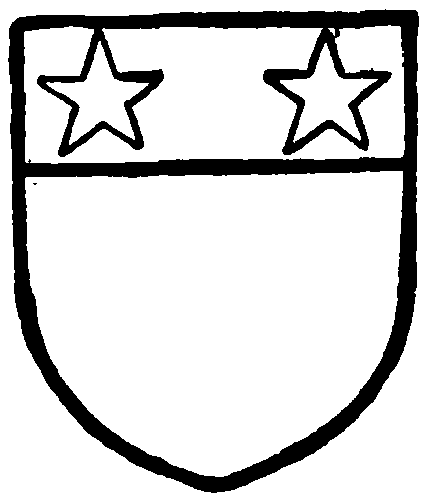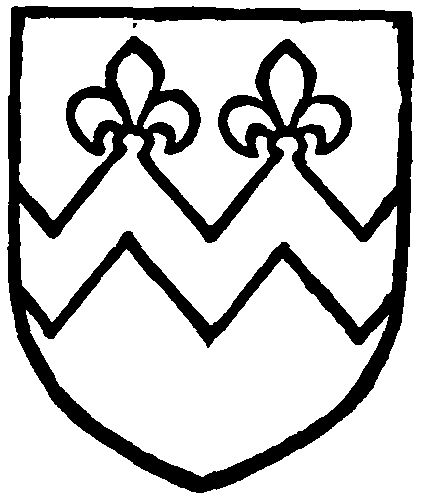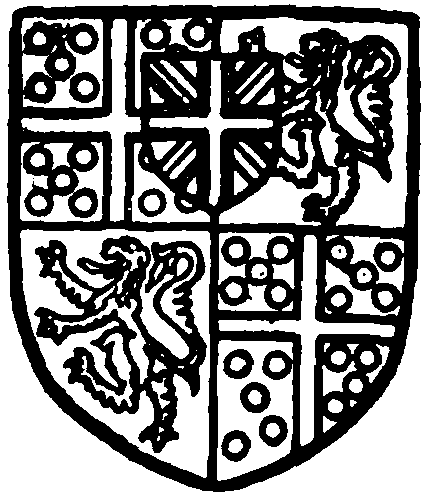A History of the County of Hampshire: Volume 4. Originally published by Victoria County History, London, 1911.
This free content was digitised by double rekeying. All rights reserved.
'Parishes: Ewhurst', in A History of the County of Hampshire: Volume 4, ed. William Page (London, 1911), British History Online https://prod.british-history.ac.uk/vch/hants/vol4/pp247-249 [accessed 31 January 2025].
'Parishes: Ewhurst', in A History of the County of Hampshire: Volume 4. Edited by William Page (London, 1911), British History Online, accessed January 31, 2025, https://prod.british-history.ac.uk/vch/hants/vol4/pp247-249.
"Parishes: Ewhurst". A History of the County of Hampshire: Volume 4. Ed. William Page (London, 1911), British History Online. Web. 31 January 2025. https://prod.british-history.ac.uk/vch/hants/vol4/pp247-249.
In this section
EWHURST
Werste (xi cent); Ywhurst (xiii cent.); Iwehurst, Yhurst, Iwerste (xiv cent.); Ewerst (xvi cent.).
Ewhurst is a small parish of 477 acres situated 6 miles north-west from Basingstoke and containing 103 acres of arable land, 254¼ acres of permanent grass and 86¾ acres of woods and plantations. (fn. 1) Ewhurst House, standing in a large park which contains a fine artificial lake of 18 acres surrounded by beech trees, is one of the seats of the Duke of Wellington. A little to the north of the house is the parish church, which was rebuilt in 1872–3 at the expense of Mr. William Henry Chichele Plowden, who rented Ewhurst for over twenty years from the Dukes of Wellington. Warner gives the following description of the estate in 1795: ' Here is a winding road amongst well-growing plantations, and by the side of a considerable sheet of water. The ground gradually rises from hence towards the house, and the gentle swells and inequalities are pleasingly interspersed with groups and single trees which we continued amongst till we approached the front of the house. The building is certainly not equal to these outward ornaments, as it consists of no particular style of architecture, being evidently built at different periods and very low, but within it contains a most excellent dining-room. The small parish church, which he (Robert Mackreth) has much improved, stands very near it upon the same eminence, so that together with the surrounding foliage they form a picturesque assemblage. But a retrospect upon the water and scenes we had just left was by far the most pleasing. The grounds yet unfinished in the back part of the house also deserve commendation, particularly a terrace, which, though thickly shaded with shrubs and evergreens, affords at intervals much fine prospect of the hills in Berkshire and the surrounding country. (fn. 2)
Ewhurst Farm, which stands just outside the boundary of the park, was used as the parsonage in the 18th century (fn. 3); the rector now resides at Wolverton, to which Ewhurst is annexed for ecclesiastical purposes.
The soil is chalk and clay, and the subsoil chalk and gravel. The chief crops are wheat, barley and oats. The children of this place attend the school at Ramsdell (vide Wootton St. Lawrence).
Among place-names mentioned in extant local records are the following— 'Estlogelonde' and 'Breche,' a field near Dorroll Copse (xiii cent.). (fn. 4)
Manors
EWHURST, which had formed part of Earl Godwin's estates, was held by Walter of Hugh de Port in 1086, and was assessed at 1 hide. (fn. 5) Like the rest of the Port Barony, Ewhurst passed to the St. Johns as overlords, occurring in 14th-century lists of St. John knights' fees, (fn. 6) but as early as 1315 it was stated to be held of the king in chief by barony as a member of the manor of Sherborne St. John. (fn. 7) Peter de Pirifist was returned as holding half a knight's fee in Ewhurst of the old enfeoffment of Robert de St. John in the middle of the 13th century. (fn. 8) The manor subsequently reverted to the overlord, and in 1310 was settled by John de St. John the son of Robert on his son Roger de St. John and Joan his wife in fee-tail. (fn. 9) Roger died seised of the manor in 1315, leaving a son and heir Edward aged six, (fn. 10) and in the same year the custody of his lands and tenements in Ewhurst and North Oakley was granted by Edward II to Isumbert de St. Blumund to hold until the coming of age of the heir by the rent of £6 0s. 7d. (fn. 11) —a rent which Edward III released to Isumbert in 1327 in consideration of the services which he had rendered Queen Isabel. (fn. 12) Sir Edward de St. John, perhaps the son and heir of Roger, but more probably his grandson, died seised of the manor of Ewhurst in 1384. (fn. 13) His heir was returned as Joan the daughter of his brother Richard de St. John aged eighteen and more, but by indenture he had granted the reversion after the death of himself and his wife Joan to trustees, (fn. 14) and it is doubtful, therefore, whether his niece ever succeeded to the manor. The history of the manor at this period is obscure, the only light thrown on it being afforded by the names of the patrons of the church as given in the episcopal registers. William Purchas of Alton, one of the trustees, presented the rector in 1392, (fn. 15) and four years later Nicholas Westone acted as patron, (fn. 16) but whether as lord of the manor does not appear. By the middle of the 15th century, however, Ewhurst had passed into the hands of John Norwode or Northwode, lord of the manor of 'Northwode Chastyners ' (Norwood, co. Kent), who presented to the living of Ewhurst four times between 1447 and 1492. (fn. 17)

St. John. Argent a chief gules with two molets or therein.
By his will John gave his land in ' Hamshire and Wildeshire' to his wife for the term of her life, (fn. 18) and she was still holding it in 1496, in which year her son and heir John Norwode died seised of the manor of 'Northwode Chastyners,' leaving as his heirs his two daughters Joan and Elizabeth aged respectively six and three. (fn. 19) The former married Sir John Norton, while the latter became the wife of Henry Barley, who owned much property in Essex and Hertfordshire, (fn. 20) and whose estates were increased in 1516 by the surrender of the manors of Ewhurst and North Oakley by Sir John Norton and Joan. (fn. 21) Henry died in 1529 and was succeeded by his son William, (fn. 22) whose name appears as patron of Ewhurst in the register of Stephen Gardiner, Bishop of Winchester (1531–55). (fn. 23) William left two daughters, Anne, who married William or Richard Barley of Isleham (co. Cambs.), and Dorothy, who married first Thomas Clopton and secondly Thomas Leventhorpe, (fn. 24) and the manor seems to have been sold by these co-heirs to Richard Ayliff, a Hampshire yeoman, (fn. 25) who by deed of 1581 settled the reversion on his nephew, Brian Ayliff, the son of his brother Roland. (fn. 26) Brian died in 1588 during the lifetime of his uncle, and consequently on Richard's death in 1597 it passed to Brian's son and heir Richard. (fn. 27) From the latter it descended to the Richard Ayliff who in 1654 petitioned to contract for his estate at Ewhurst which had frequently been plundered during the civil wars. (fn. 28) He was succeeded by John Ayliff, probably his son, who was holding in 1664, (fn. 29) but within the next twenty years the manor had passed to James Plowden, (fn. 30) who had married Dorothy the eldest daughter of John Ayliff, and his descendant, the Rev. James Plowden of Ewhurst, died on 8 August 1761. (fn. 31) His son and heir James Chichele Plowden sold the manor shortly afterwards to the notorious Robert Mackreth, (fn. 32) who began life as a servant and billiard-marker at White's Club, St. James's Street, and amassed a large fortune in India. He was nominated for the pocket-borough of Castle Rising by the third Earl of Orford in 1774 and was knighted by George III in 1795. (fn. 33) Seven years later, on his withdrawal from public life, he retired to his estate at Ewhurst, on which he spent enormous sums (fn. 34) and ruined himself. The house was then sold to a Mr. Symonds, from whom it passed to Sir Peter Pole, who also spent large sums on Ewhurst. (fn. 35) In 1837 he sold it to Arthur Wellesley first Duke of Wellington, (fn. 36) whose grandson Arthur Charles fourth Duke of Wellington is the lord of the manor and the owner of the whole parish. He resides at Ewhurst and has much improved the house.

Plowden. Azure a fesse dancetry with itspoints ending in fleurs de lis or.
A wind-mill was included in an extent of the manor made in 1315. (fn. 37)
FINLEY, once a farm in the parish of Ewhurst, (fn. 38) occurs as ' Finlei' in Domesday Book, being held with Wolverton by Alvred the Priest. (fn. 39) There are two references to land in Finley in early fines—the first in 1249, in which year Godfrey de Finley quitclaimed half a virgate in Finley to Adam de Finley, receiving in exchange 12 acres in the same vill lying in fields called 'Estlogelonde' and 'Breche,' (fn. 40) and the second in 1293, in which year John de Batesford settled a messuage and 2 virgates of land in Finley on Robert de Finley and Maud his wife and their issue. (fn. 41) The name is still preserved in Finley's Row, which is situated a little to the north of Ewhurst Park.

Wellesley, Duke of Wellington. Gules a cross between twenty roundels argent, for Wellesley, quartered with Or a lion gules collared with a crown or for Colley, and in the chief a scutcheon of the union device of Great Britain and Ireland.
Church
The church of ST. MARY THE VIRGIN, rebuilt at the expense of Mr. W. H. C. Plowden and consecrated in 1873, consists of a chancel 12 ft. 10 in. by 12 ft., nave 25 ft. 4 in. by 15 ft. 8 in., with a north transept and vestry 9 ft. 2 in. by 8 ft. 8 in., and a south transept 9 ft. 2 in. by 6 ft. 3 in., the measurements being internal.
The east window is partly of 15th-century stonework, and has three cinquefoiled lights under a fourcentred head with a moulded label.
The other windows throughout the church are modern, in 14th-century style. The west doorwayis the principal entrance to the church, and has shafted jambs and a moulded two-centred arch.
The piscina in the south wall of the chancel has two late 13th-century stones in the jambs with stop chamfers, and the old drain is also preserved. The walls are of flint and stone and the roofs are tiled. All the internal fittings are modern.
In the north transept is a monument to Sir Robert Mackreth's wife, while in the south are two modern wall tablets to members of the Plowden family of Ewhurst House. The stone bell-cot over the west gable contains one small bell.
The plate consists of a silver chalice inscribed, 'The gift of Francis Chute, 1739'; a silver paten of 1720 given by the rector, the Rev. Richard Pole, in 1847; a silver flagon of 1847 inscribed, 'The gift of W. H. C. Plowden, August 1873'; and a silver alms dish of 1863, inscribed as the flagon.
There is only one book of registers, and the entries are arranged in columns, on the parchment pages, under the headings of baptisms, marriages and burials, the first dating from 1684 to 1810, with a gap between 1765 and 1772, the marriages from 1682 to 1738 and from 1771 to 1812, and the burials from 1687 to 1762 and from 1791 to 1800. At the other end of the same book are a few marriage entries from 1771 to 1812, the number being only eight.
Advowson
The first mention of a church in the parish is in 1310, in which year the advowson was included in the settlement of the manor upon Roger de St. John and his wife Joan. (fn. 42) The advowson has throughout followed the descent of the manor (fn. 43) (q.v.).
On 2 July 1880 Ewhurst rectory was united with the rectory of Wolverton by Order in Council. (fn. 44)
There was also a free chapel in the parish endowed with tithes which were of the yearly value of £1 6s. 8d. in the reign of Edward VI. The incumbent, Sir Richard Gosmer, clerk, received the profits, it was stated, but 'doth nether celebrate nor saye the devyne service there at ony tyme.' (fn. 45)
In the reign of William III James Plowden, lord of the manor of Ewhurst, engaged in a dispute with Andrew Bruce, the rector of Ewhurst, about the payment of tithes. Plowden wished to compound for them by an annual payment of £15, while the rector wished to take his tithes in kind—a practice which had fallen into disuse during the civil wars—because he had been informed that if he did so he would make £25 a year from them. (fn. 46) The result of the suit has not been discovered.
There are apparently no endowed charities in this parish.
